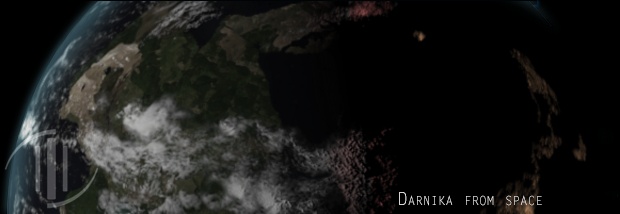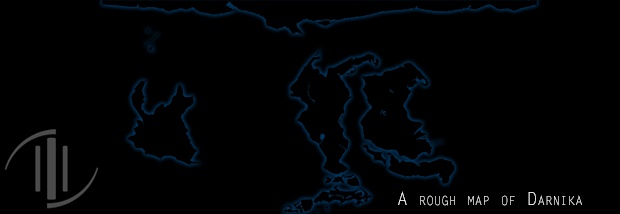Elements of a human colony world cropped up fairly early in the development of Grieving Suns – however, it was not always the case. The earliest drafts from 2007 actually built on the Atlantis myth in a far more literal way than what eventually ended up in the final story. The Blue Lions would have stumbled across both old artifacts on Earth, as well as the shipwreck in the asteroid cluster where Isabella is found and started to piece together the whole backstory of how the Kessari have treated Earth before.
Isabella – together with a number of flashback chapters set during the cataclysm on Earth – served the frame the context which would help the protagonists decide to attempt an independent Earth.
Ultimately, I dropped this approach, as especially the flashback chapters felt artificial and forced. Elements of a secret colony world had already appeared in notes and drafts at that point, and I experimented with expanding this idea. It worked a whole lot better and more organically in the context of the story I wanted to tell – and it also solved one big problem I had: How a technologically inferior force would stop the Ambassador and his strike fleet.
In the Universe

Darnika is the fourth planet of the Thelion system, and simultaneously the only one fit for human habitation (without the aid of technology). The planet is a close Earth analogue in mass, atmosphere and other general properties.
Darnikas name is thought to derive from a very old local dialect. Linguistic reconstruction suggests that it used to mean ‘shimmer’. Linguists are not entirely certain if this is accurate, or what specifically was referred. Theories put forward to explain this interpretation of the name include that it describes the impressive auroras, visible from afar in space, Darnikas bright and reflective appearance in the sunlight thanks to clouds and its oceans, or – a more obscure view – referring to a ‘glimmer of hope’.
Geography

The face of Darnika is dominated by three large continents. The northernmost, essentially covering the north pole, is simultaneously the smallest of the three. The second and largest is located near the equator and stretches deep into the southern temperate zones, with a long chain of large islands reaching out towards the south pole. The third continent lies isolated from the other two, located nearly five thousand kilometres from either continent.
The Northern continent
Due to the generally higher mean temperature of Darnikas atmosphere, permanent ice caps are limited to small glaciers at elevations beyond three thousand meters near the polar alpine ranges. Forested wetlands are the dominant biome, and plenty of rivers break up the dense canopy of trees. There are a few Darnikan settlements along the southern coast, but they are generally small communities seldom exceeding twenty thousand inhabitants – with a total of less than three million people.
The Main continent
Settled by colonists from Earth ten milennia earlier, this large continent now is home to the vast majority of the Darnikan population. Its western coast is dominated by a large mountain range dotted with volcanoes caused by the subduction of a tectonic plate there. The east coast is relatively flat and features several extensive river deltas.
The centre of the continent is bisected by a shallow ocean, seldom more than 100 meters deep. The interior areas of the landmasses are generally arid, especially near the western coast where the mountain range prevents the humidity from reaching the interior areas. As such, much of the population remains concentrated near the coastal areas and the expansive grass- and woodlands of the eastern flatlands.
One of the hallmarks of the main continent is an impact crater that happened to strike near the eastern coast. The impact and subsequent erosion resulted in a large crescent moon shaped cliff face. Today, the area is home to a small residential community that is nestled near or on the cliff face, nearby the river flowing over the edge in spectacular waterfalls. Darnikas capital city of Zhakane is located within viewing distance, and on clear days the government tower is easily visible from there.
The Western continent
Isolated from the other two major landmasses by several thousand kilometres, it is uninhabited – and the last refuge for the native Darnikan flora and fauna.
Its location in the equatorial latitudes gives it a generally tropical climate, at least in its coastal areas. It is a product of a (geologically) recent collision between two tectonic plates, which causes it to be bisected from west to east by a high mountain range – easily rivaling the Himalayas on Earth. In fact, the highest peak, located near the eastern coast, just about hits 9000 metres over sea level, another indication that this mountain range is geologically young.
Its northern continental shelf is dotted with numerous atolls – coral reefs have settled the area. Most are barren rocks, but marine biodiversity is enormous in the shallow warm waters.
A few hundred kilometres off the coast an island chain of volcanic origin is located, located above what can be best described as a ‘double hotspot’ that leads to a peculiar zig-zag pattern of the islands.
Surprisingly even migratory plant and animal species from the main continents never gained a real foothold on the western continent, and what little has is restricted to small, isolated areas on the coastlines where careless explores in centuries past have landed.
Fauna and Flora
The main and northern continents are dominated by plant and animal life descended from Earth species – grasses, agricultural crops, coniferous trees, and a variety of shrubs as well as domesticated animals. The transplanted species quickly overwhelmed the native ecosystem, and there are few native species remaining – mainly insect-like creatures, and fungi – one species of fungus even thrived with the new species present. It entered a symbiotic relationship with several staple crops, enabling higher and more consistent yields, as well as being edible to humans (although not particularly tasty).
The western continent remains the last refuge of native life on this planet, much of which seems to be in a development stage comparable to several hundred million years ago on Earth.
Fern-like growth dominates wide swaths, with few plants reaching heights similar to Earth trees. One notable exception is the green pillar, a distant cousin to the common ferns of Darnika – a towering piece of wood, up to fifteen metres high, but unlike trees has no branches to speak of. Instead the stem is covered in a set of interlocking leaves of up to one square metre in area that lie flat to the stem – hence giving it the name of ‘green pillar’. When it rains the tree ‘raises’ the leaves into a horizontal position intended to funnel rainwater towards the stem.
Animals are usually limited in size, the larger ones being approximately the size of small pigs or boars. Predators are few and far between, though the debate still goes on whether this is a natural occurrence or caused by the human colonists.
Climate
Darnika is a warm and generally humid world. The dominating climates are sub-tropical and tropical zones, with temperate (and still wet) zones towards the more extreme latitudes. The only exception to that are the arid midlands of the main continent, but even there, despite a relative lack of humidity and rainfall, the area resembles more a savanna than a true desert.
The higher mean temperature causes regular rainfalls; Hurricane/Typhoon level storms are common and average about 40 per year, mainly afflicting western coasts in the mid latitudes.
The lower axial tilt reduces seasonal variations quite a bit. Snowfall is virtually unheard of save for the highest peaks and most northern latitudes.
Physical properties |
|
|---|---|
| Orbital period | 383 (Earth) days |
| Mean orbital distance | 1.05 AU / 157,5 million kilometres |
| Orbital eccentricity | 0,023 |
| Orbital inclination | 4,15° |
| Rotational period | 22 hours 18 minutes |
| Axial tilt | 15,39° |
| Equatorial surface gravity | 8,96 m/s² (~0,95g) |
| Mean equatorial radius | 6.485km |
| Atmospheric composition | 74,210% Nitrogen 24,010% Oxygen 00,770% Argon 00,051% Carbon Dioxide (510ppmv) 00,959% trace/others |